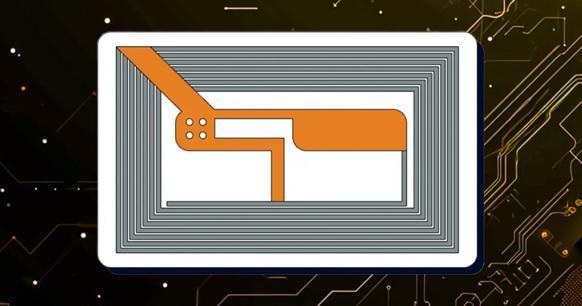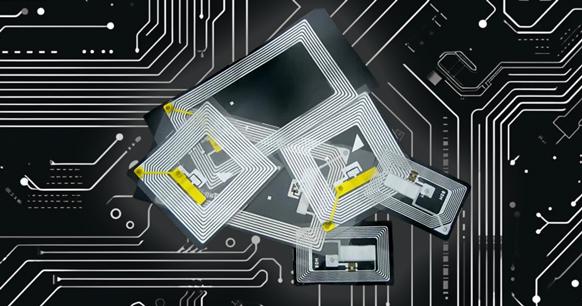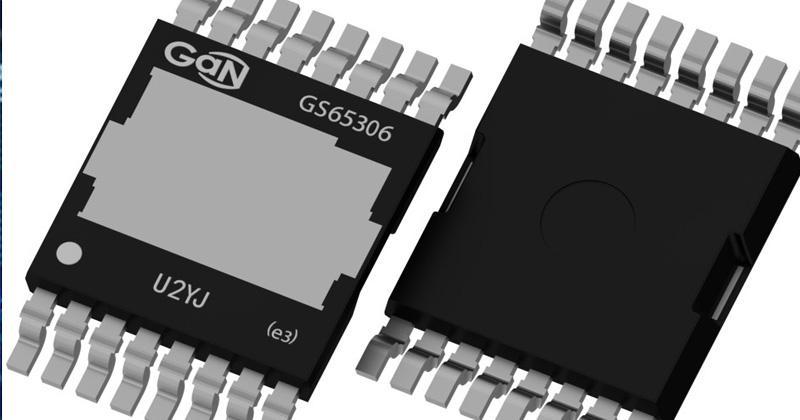
RFID Stickers: Innovations in Tracking and Inventory Management
What Are RFID Stickers?

Radio-frequency identification (RFID) tags provide organizations in a variety of industries and sectors with a valuable tool for driving innovation. From retail to pharma, manufacturing, utilities, and beyond, RFID is a technology that can assist teams in maintaining and tracking goods, equipment, assets, or inventory, thereby streamlining operations. RFID tags are small, chip-based devices that are used to identify and track objects using electromagnetic fields. In contrast to barcodes, RFID tags do not require physical contact with a reader, which allows for the tracking of entire pallets or truckloads of goods. This makes RFID technology an optimal solution for applications such as smart label tracking. RFID stickers are a simple yet effective solution that allows for the attachment of tags to a diverse range of equipment and inventory items.
RFID tags are typically designed for use in rugged, outdoor-based applications that can withstand harsh environmental conditions. These tags are often attached to cargo containers, vehicles, and light rail cars for the purposes of vehicle tracking, cargo identification, and supply container tracking.
What are RFID Stickers and Tags?
RFID stickers are comparable to barcode labels or price tags, but they feature a unique inlay that can be read by an RFID reader, making them a highly versatile solution. They can be used to track a variety of assets, including tools, equipment, inventory, personnel, and objects.
They are used in a wide range of industries for a variety of applications, including inventory management and supply chain tracking, access control, asset tracking, and animal identification. Furthermore, they can be employed in the production of contactless payment cards and electronic toll collection systems.
What are the Differences Between a Passive and Active RFID?
A passive RFID tag does not contain a battery and is powered by radio waves. When a passive tag is within range of an RFID reader transmitting a signal, its antenna transmits a reply with the tag's unique ID number, which is then picked up by the reader.
Ultimately, the choice between passive and active will depend on the specific use case in question. If your project requires real-time monitoring, you will need to use active RFID. Examples of applications include personnel safety monitoring, high-value inventory control, and tracking inventory that has strict handling requirements. For RFID projects that do not require real-time visibility, passive RFID is likely the optimal solution. Examples of passive RFID projects include check-in/check-out systems, shipping and receiving validation, and work-in-process systems.
What are the Advantages of RFID Versus Barcodes?
The primary distinction between RFID and barcode technology is that a RFID tag is read by radio waves, rather than a scanner. The ability to scan RFID tags from a distance is a time- and cost-effective solution, as it eliminates the need for the item to be in line of sight.
In addition to reading, the tags are also capable of communicating with other devices via a radio signal, which is an additional benefit of this technology. This allows for more precise and accurate tracking.
Another advantage of RFID over barcodes is that the information stored on them can be modified and updated as needed to align with evolving business requirements. Moreover, the data can be encrypted, which makes it more difficult to counterfeit or replicate.
While RFID stickers and tags offer greater accuracy, they often have a higher cost than traditional barcodes and do not provide the ability to capture data from multiple sources on a single object. It is therefore unlikely that they will ever completely replace barcodes.
RFID Sticker Power Levels
The frequency range of radio waves that can be used by RFID equipment and tags is determined by the standards set by the European Telecommunications Standards Institute (ETSI). These are limited to the 865–868 MHz range. In North America, the Federal Communications Commission (FCC) is responsible for regulating the use of radio waves. The FCC has set limits on the frequency range for equipment and tags, which is 902–928 MHz.
The UHF (ultra-high-frequency) range of 860 MHz-956 MHz is a popular choice for many companies. However, this frequency is not globally accepted due to its inability to provide coverage for the entire world's population. This is why manufacturers must develop RFID devices that operate across multiple frequency bands, such as the EPCglobal Gen-2 and ISO 18000-6C standards.
The frequency range of radio waves that can be used by RFID equipment and tags is determined by the standards set by the European Telecommunications Standards Institute (ETSI). These are restricted to the 865–868 MHz range. In North America, the Federal Communications Commission (FCC) is responsible for regulating the use of radio waves, limiting the operation of equipment and tags to the frequency range of 902–928 MHz.
The UHF (ultra-high-frequency) range of 860 MHz-956 MHz is a popular choice for many companies. However, this frequency is not globally accepted due to its inability to provide coverage for the entire world's population. This is why manufacturers must develop RFID devices that operate across multiple frequency bands, such as the EPCglobal Gen-2 and ISO 18000-6C.
The frequency range of radio waves that can be used by RFID equipment and tags is determined by the standards set by the European Telecommunications Standards Institute (ETSI). These are restricted to the 865–868 MHz range. In North America, the Federal Communications Commission (FCC) oversees the regulation of radio waves, limiting the use of equipment and tags to the frequency range of 902–928 MHz.
The UHF (ultra-high-frequency) range of 860 MHz-956 MHz is a popular choice for many companies. However, this frequency is not globally accepted due to its inability to cover the entire world's population. This is why manufacturers must develop RFID devices that operate across multiple frequency bands, such as the EPCglobal Gen-2 and ISO 18000-6C.

Regulatory Standards
The RFID industry has established a set of technical and compliance standards. Of these, the most important is the EPCglobal specification. This is a universal standard that can be applied to almost all RFID tags and equipment worldwide, ensuring a consistent approach to compliance.
A typical RFID tag is a silicon-on-insulator chip with four memory banks. Each memory bank is allocated a distinct set of data pertaining to the object or device being tagged. These memory banks can include the Electronic Product Code (EPC), Toll ID, User ID, and Reserved ID.
RFID tags are used in a variety of applications, including the tracking and monitoring of products at the point of sale, inventory control and tracking, employee identification, the provision of secure access to buildings and premises, and the measurement of machinery and other industrial assets' performance.
Standardization is becoming an increasingly important consideration for a growing number of industries, as it streamlines the production and sale of the same product to different clients. Moreover, it minimizes production costs by enabling the manufacturing of industry resources on a large scale and in accordance with specific standards.
These standards also facilitate a more efficient manufacturing process, which allows for lower costs and faster turnaround times. Furthermore, industry-wide standards can enhance employee productivity by enabling more efficient collaboration with industry resources.
Furthermore, industry standards facilitate the production of resources on a larger scale, reducing the necessity for costly research and development. This allows companies to save money in the long term by purchasing their devices at a lower cost and achieving a higher return on investment due to their increased usability.
Getting Started with RFID
RFID stickers are just one component of a comprehensive system that enables organizations to track inventory, equipment, and personnel. An RFID tracking application can provide a wide range of solutions for companies in virtually any industry, including:
- Track and trace WIP (Work in Process) goods
- Prevent items from unauthorized usage
- Monitor safety status of personnel
- Ensure vital equipment is not taken off premises
- Keep track of reusable bins and equipment
- Audit outbound shipments to reduce chargebacks
- Check where items are stored for quick finding



